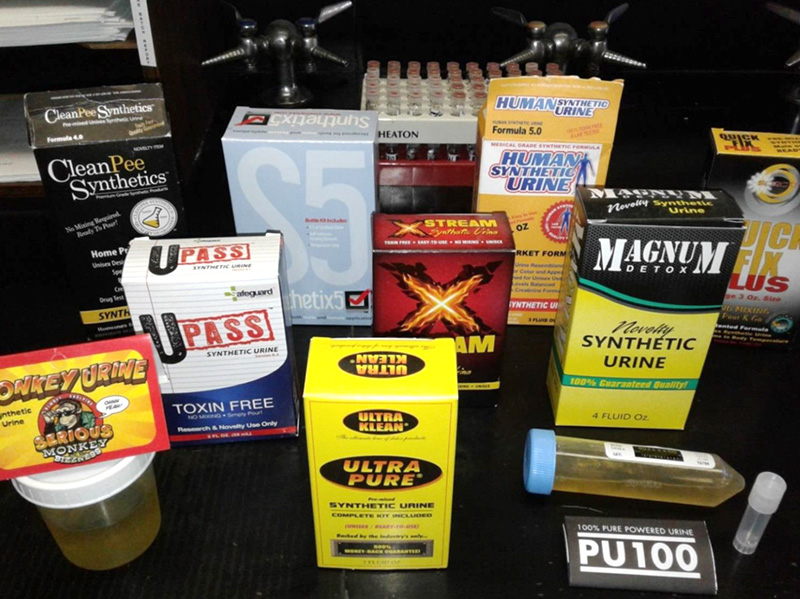UMMC pathology prof’s assay helps uncover dubious specimens
If someone tries to pass fake urine off as the real deal during a drug screen at the University of Mississippi Medical Center, he or she will be in trouble.

“We’ve seen samples come through that are simply water and some that were all-white, which turned out to be hand soap from the dispenser,” said Dr. Patrick Kyle, director of clinical chemistry and toxicology at UMMC.
But it’s not always so clear.
Kyle, an associate professor of pathology, presented work at the Society of Forensic Toxicologists meeting Oct. 7-12 in Minneapolis, Minnesota, on an assay he developed to catch one class of fakes: synthetic urine.
“These products are packaged and labeled for novelty and entertainment purposes, but inside the packages you’ll find instructions for heating to physiologic temperature and a heating pad,” he said.
Sold under several brand names, these products are available online, in gas stations or in smoke shops.
Earlier in 2018, the Mississippi State Legislature considered a bill that would make synthesizing urine products illegal, but did not pass it into law.
“Non-physiologic specimens,” as Kyle calls them, can be quite sophisticated.
Standard urine drug screenings check for metabolites, or broken-down parts, of drugs like amphetamines, marijuana and opioids. They also check some characteristics of the sample to see if it is comparable with human urine, such as pH, specific gravity and levels of creatinine and urea, normal products of metabolism.
Synthetic urine can pass all these criteria, potentially leading to a false negative result. However, these yellow liquids are a little too clean.

Kyle’s assay checks urine samples for the presence of four compounds. Three come from legal vices: cotinine, a nicotine metabolite; theobromine, found in chocolate, tea and coffee; and caffeine. These exogenous – from outside the body – compounds are joined by endogenous urobilin, a product of hemoglobin breakdown.
“We chose these compounds because they are common,” Kyle said. “However, we could detect false samples using any number of endogenous and exogenous compounds.
“Other clinical labs are developing their own new assays.”
Using a technique called liquid chromatography-mass spectrometry, the lab tested 10 products marketed as synthetic urine, 100 known urine samples collected explicitly for the project, 200 samples collected for pre-employment screening for a state agency, and 100 samples for pain management testing at UMMC.
One reason clinical labs are interested in developing a new assay is in response to the opioid crisis, Kyle said. For pain management patients, health care providers want to make sure patients are using their medications as prescribed.

Dr. Jaswinder Kaur, a fourth-year resident in pathology, also worked on the project.
“I was excited to get involved in a research project that was a little different than the typical surgical work in pathology and applied my experience studying chemistry,” she said.
None of the synthetic samples contained any of the four compounds. Meanwhile, the assay detected at least one for the four in all 100 real samples. This suggests the assay could be an effective tool to distinguish real from fake.
Among the experimental samples, 3 percent from pre-employment and 1 percent from pain management lacked all four components. These samples didn’t pass secondary testing, either, which included checking for biological material like cells usually present in urine.
This suggests they were non-physiologic specimens, which Kyle said is consistent with other data on the prevalence of false specimens in drug testing.
The assays are sensitive but labor- and cost-intensive. However, there’s an easier way to screen for suspicious samples. In real human urine, foam persists for more than two minutes after one minute of shaking. In the synthetic samples Kyle and Kaur tested, foam disappeared in seconds.
“Shaking could be a good preliminary check of the validity of the sample that can be performed in the clinic,” Kyle said.
While the new assay may flag some false specimens, it won’t work for other ways people may try to cheat test results, such as adding chemicals to neutralize drug metabolites or simply substituting another person’s urine for their own.
“We’re also limited by the sensitivity of our equipment,” Kyle said. “If a compound is below detection level, we won’t catch it.”
Couldn’t synthetic urine manufacturers just add caffeine or urobilin to their products?
“Of course,” Kyle said. But in the chemical arms race, this assay is another tool that labs can add to their work stream to catch dubious samples.



